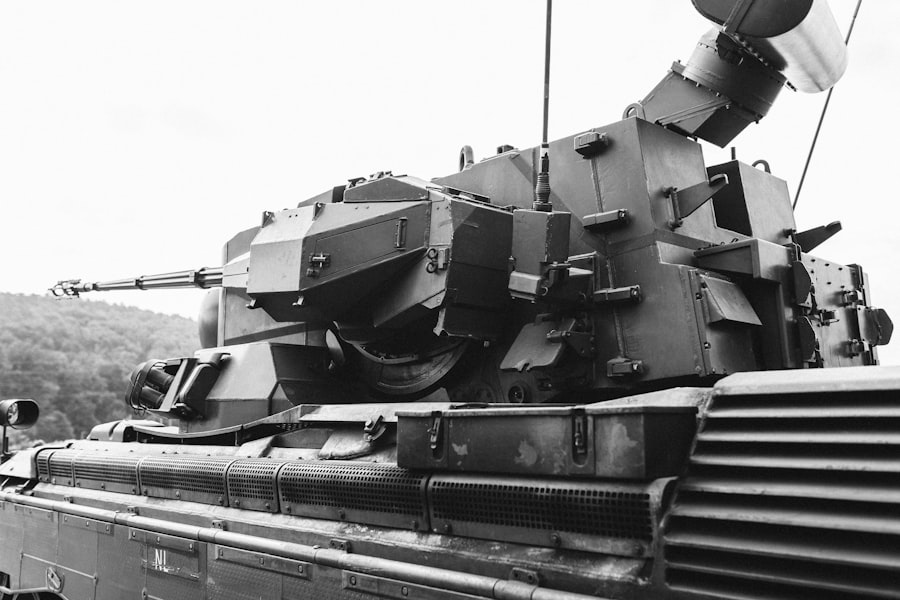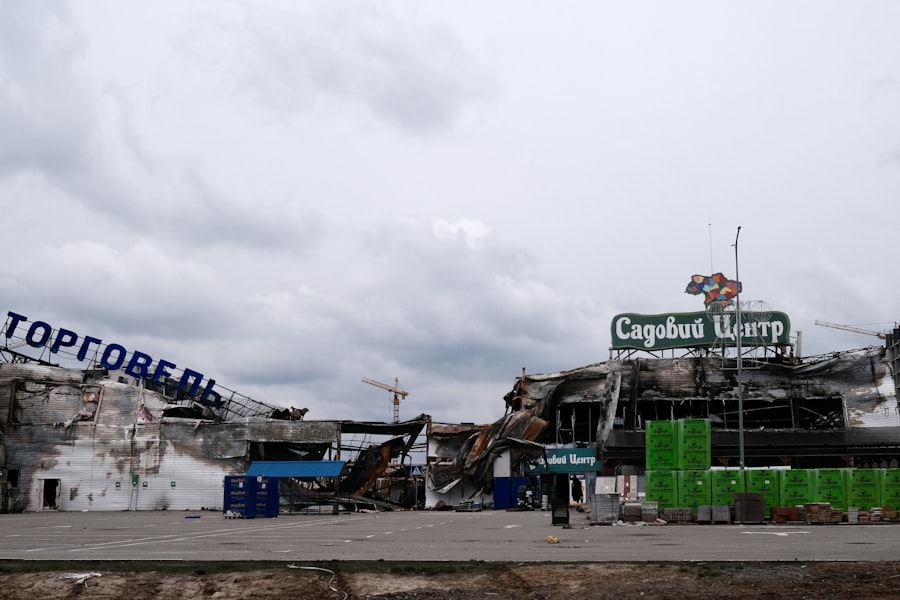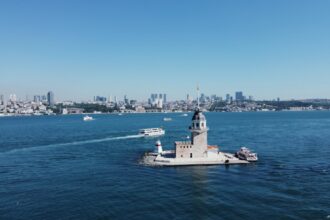In February 2022, the world watched in disbelief as the Russian Army launched a full-scale invasion of Ukraine, marking a significant escalation in a conflict that had simmered since 2014. This military operation was characterized by a rapid advance into Ukrainian territory, with the Kremlin asserting that it aimed to protect Russian-speaking populations and counter perceived threats from NATO. However, the invasion quickly revealed itself to be far more complex than a straightforward military campaign.
The Russian forces faced unexpected resistance, logistical challenges, and international condemnation, leading to a protracted conflict that has had profound implications for both Ukraine and Russia. The invasion not only aimed to reshape the geopolitical landscape of Eastern Europe but also tested the resolve of the Ukrainian people and their government. As the conflict unfolded, it became evident that the Russian military’s initial assumptions about a swift victory were misguided.
The resilience of the Ukrainian defense, coupled with various internal and external factors, contributed to a situation that would challenge Russia’s military might and strategic objectives. The ramifications of this conflict extend beyond the battlefield, influencing global politics, economics, and humanitarian conditions.
Key Takeaways
- The Russian Army’s invasion of Ukraine was met with failure due to a combination of factors.
- Lack of international support for Russia’s invasion further weakened their efforts in Ukraine.
- Ukrainian resistance and defense strategies played a crucial role in thwarting the Russian Army’s advances.
- Inadequate training and equipment of Russian troops hindered their effectiveness in the conflict.
- Leadership and strategic failures within the Russian Army contributed to their ultimate defeat in Ukraine.
Factors Contributing to the Russian Army’s Failure
Several factors contributed to the Russian Army’s failure in Ukraine, beginning with underestimating the Ukrainian military’s capabilities and resolve. The Kremlin appeared to believe that its superior numbers and firepower would quickly overwhelm Ukrainian defenses. However, this assumption proved to be a critical miscalculation.
The Ukrainian forces, bolstered by a strong sense of national identity and purpose, mounted a fierce resistance that caught Russian troops off guard.
Additionally, logistical issues plagued the Russian military throughout the invasion.
Reports indicated that supply lines were stretched thin, leading to shortages of essential resources such as food, ammunition, and fuel. The inability to maintain effective supply chains hampered operational effectiveness and morale among Russian troops. As the conflict dragged on, these logistical challenges became increasingly apparent, contributing to a decline in combat readiness and overall effectiveness on the battlefield.
Lack of International Support for Russia’s Invasion

The international response to Russia’s invasion of Ukraine played a crucial role in shaping the dynamics of the conflict. From the outset, many countries condemned Russia’s actions, viewing them as a blatant violation of international law and Ukraine’s sovereignty. Economic sanctions were swiftly imposed by Western nations, targeting key sectors of the Russian economy and individuals close to President Vladimir Putin.
This lack of international support not only isolated Russia diplomatically but also placed significant economic pressure on its government. Moreover, the global community rallied around Ukraine, providing military aid, humanitarian assistance, and diplomatic backing. Countries such as the United States and members of the European Union supplied advanced weaponry and training to Ukrainian forces, enhancing their ability to resist Russian aggression.
This influx of support not only bolstered Ukraine’s military capabilities but also sent a clear message to Russia that its actions would not go unchallenged on the world stage.
Ukrainian Resistance and Defense Strategies
| Resistance and Defense Strategies | Metrics |
|---|---|
| Guerrilla Warfare | Number of guerilla units |
| Urban Warfare | Percentage of urban areas defended |
| Fortifications | Number of fortified positions |
| Underground Resistance | Number of underground cells |
| Foreign Support | Amount of foreign aid received |
The Ukrainian resistance emerged as one of the most significant factors in countering the Russian invasion. From the very beginning, ordinary citizens joined forces with professional soldiers to defend their homeland. This collective effort fostered a sense of unity and determination among Ukrainians, who were willing to fight for their sovereignty and independence.
The Ukrainian government effectively mobilized its population, calling for volunteers and utilizing social media to galvanize support both domestically and internationally. Ukrainian defense strategies also evolved rapidly in response to Russian tactics. The use of asymmetric warfare became a hallmark of their approach, with small units employing hit-and-run tactics against larger Russian formations.
This strategy allowed Ukrainian forces to exploit weaknesses in Russian logistics and command structures while minimizing their own casualties. Additionally, the integration of advanced technology, including drones and anti-tank weaponry supplied by Western allies, significantly enhanced Ukraine’s defensive capabilities.
Inadequate Training and Equipment of Russian Troops
The inadequacies within the Russian military became increasingly evident as the conflict progressed. Reports surfaced indicating that many Russian soldiers were ill-prepared for the realities of modern warfare. Training programs had not adequately equipped them for the complexities of urban combat or counterinsurgency operations.
This lack of preparation was compounded by issues related to morale and motivation among troops who were often conscripted or deployed without clear objectives. Furthermore, equipment shortages plagued the Russian Army throughout the invasion. While Russia possesses a formidable arsenal of weaponry, logistical failures meant that many units lacked access to essential supplies and modern technology.
This disparity became particularly pronounced when compared to the advanced systems provided to Ukrainian forces by their allies. As a result, Russian troops found themselves at a disadvantage in terms of both training and equipment, further complicating their operational effectiveness.
Leadership and Strategic Failures within the Russian Army

Leadership failures within the Russian military hierarchy also played a significant role in its inability to achieve its objectives in Ukraine. Analysts noted that decision-making processes were often centralized around President Putin and a small circle of advisors, limiting flexibility on the ground. This top-down approach stifled initiative among field commanders who were unable to adapt strategies based on real-time developments in combat situations.
Moreover, strategic miscalculations characterized Russia’s approach from the outset. The initial plan relied heavily on rapid advances into key urban centers, assuming that Ukrainian resistance would collapse under pressure. However, as resistance intensified and logistical challenges mounted, it became clear that this strategy was fundamentally flawed.
The inability to pivot or adjust tactics in response to changing circumstances ultimately hindered Russia’s chances for success.
Economic and Political Consequences for Russia
The economic fallout from the invasion has been severe for Russia, with sanctions imposed by Western nations leading to significant disruptions in trade and investment. Key sectors such as energy, finance, and technology faced crippling restrictions that have stunted economic growth and led to inflationary pressures within Russia. The long-term consequences of these sanctions are likely to reshape Russia’s economy for years to come.
Politically, the invasion has also had profound implications for Russia’s standing on the global stage. Once viewed as a major player in international affairs, Russia now finds itself increasingly isolated from Western nations. This shift has prompted discussions about realigning alliances and seeking new partnerships with countries outside the traditional Western sphere of influence.
However, these efforts have not fully compensated for the loss of economic ties with Europe and North America.
Impact on International Relations and Alliances
The invasion of Ukraine has significantly altered international relations and alliances across the globe. NATO has experienced a resurgence in unity among its member states as they collectively respond to perceived threats from Russia. Countries that once maintained neutral stances have reconsidered their positions; Finland and Sweden have sought NATO membership in response to heightened security concerns in Northern Europe.
Additionally, non-Western nations have been forced to navigate complex diplomatic waters as they balance relationships with both Russia and Western powers. Countries like China have expressed support for Russia while simultaneously recognizing the need for stability in global markets. This delicate balancing act underscores how the conflict has reshaped geopolitical dynamics beyond Europe.
Humanitarian Crisis and Civilian Casualties in Ukraine
The humanitarian crisis resulting from the invasion has been catastrophic for Ukraine. Millions have been displaced from their homes as fighting escalates in urban areas, leading to widespread destruction of infrastructure and essential services. Civilians have borne the brunt of this conflict, with countless lives lost or irrevocably altered due to violence and instability.
International organizations have struggled to provide adequate assistance amid ongoing hostilities. Humanitarian corridors have been established but often face challenges due to continued fighting or bureaucratic obstacles. The plight of civilians caught in this conflict serves as a stark reminder of war’s devastating impact on human lives and underscores the urgent need for diplomatic solutions.
Lessons Learned and Future Implications for the Russian Army
The failures experienced by the Russian Army during its invasion of Ukraine offer critical lessons for future military engagements. The importance of accurate intelligence assessments cannot be overstated; underestimating an adversary can lead to catastrophic consequences on the battlefield. Additionally, logistical planning must be prioritized to ensure that troops are adequately supplied and supported throughout operations.
Moreover, leadership structures within military organizations must allow for flexibility and adaptability in response to changing circumstances on the ground. The centralized decision-making observed in Russia’s approach may hinder effective responses during complex conflicts where rapid adjustments are necessary for success.
The Aftermath of the Russian Army’s Failure in Ukraine
In conclusion, the aftermath of the Russian Army’s failure in Ukraine has far-reaching implications for both Russia and the international community at large. The conflict has exposed vulnerabilities within Russia’s military capabilities while simultaneously galvanizing Ukrainian resistance and unity. As global dynamics shift in response to this crisis, it is clear that lessons learned from this conflict will shape future military strategies and international relations for years to come.
The ongoing humanitarian crisis serves as a poignant reminder of war’s toll on innocent lives, emphasizing the need for diplomatic efforts aimed at resolving conflicts peacefully rather than through military means. As nations reflect on this unprecedented situation, it is hoped that greater emphasis will be placed on dialogue and cooperation rather than aggression and hostility in addressing global challenges moving forward.
In analyzing the reasons behind the Russian army’s failure in Ukraine, it is essential to consider various strategic, logistical, and geopolitical factors that have influenced the conflict’s outcome. A related article that delves into these aspects can be found on the website “In The War Room.” This article provides a comprehensive overview of the challenges faced by the Russian military, including supply chain issues, tactical missteps, and the resilience of Ukrainian forces. For a deeper understanding of these dynamics, you can read more in the article available at In The War Room.
WATCH NOW! 🎖️ Plot Twist: Russia’s Military Is Being Eaten Alive By Its Own Corruption
FAQs
What were the main reasons for the Russian army’s failure in Ukraine?
The main reasons for the Russian army’s failure in Ukraine include logistical challenges, stiff resistance from Ukrainian forces, international sanctions, and lack of popular support for the invasion.
How did logistical challenges contribute to the Russian army’s failure in Ukraine?
Logistical challenges, such as supply chain disruptions and poor planning, hindered the Russian army’s ability to sustain its military operations in Ukraine.
What role did stiff resistance from Ukrainian forces play in the Russian army’s failure?
Ukrainian forces put up a strong and determined resistance, making it difficult for the Russian army to achieve its objectives and maintain control over the territory it had invaded.
How did international sanctions impact the Russian army’s campaign in Ukraine?
International sanctions imposed on Russia in response to its invasion of Ukraine severely constrained the Russian army’s access to crucial resources and support, further undermining its ability to sustain its military operations.
Why was the lack of popular support for the invasion a factor in the Russian army’s failure in Ukraine?
The lack of popular support for the invasion among both the Russian and Ukrainian populations undermined the Russian army’s efforts and contributed to its failure in Ukraine.




